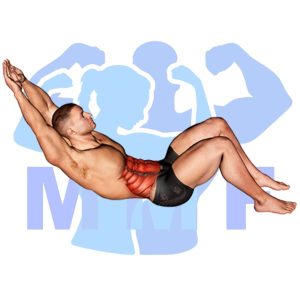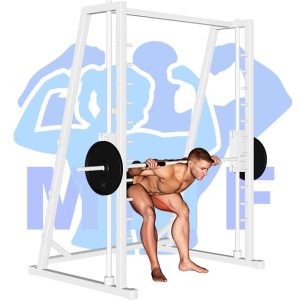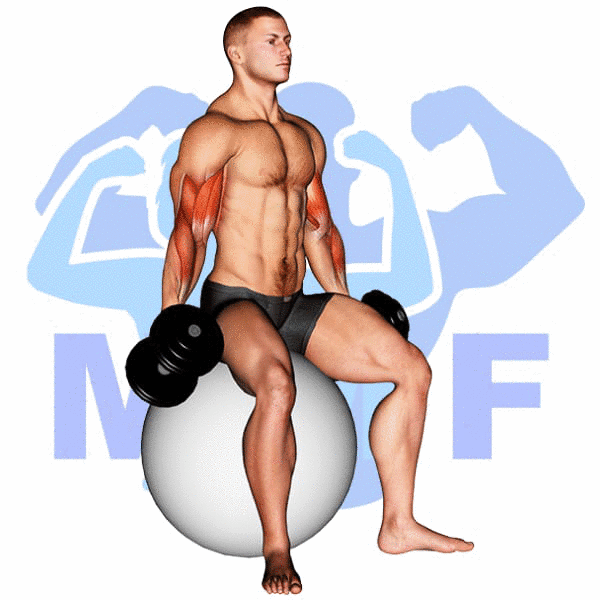Are you tired of feeling like you’re doing crunch after crunch at the gym with little to no results? Have you heard of the hollow hold exercise but just can’t seem to master it? Don’t worry, you’re not alone. Many fitness enthusiasts struggle with the hollow hold, which is a common exercise used to target the core muscles. Part of the difficulty may stem from having a weak core, which can make it hard to maintain proper form throughout the exercise. But fear not, because in this post we will provide tips and techniques to help you master the hollow hold and start seeing the results you crave in your core strength.
Hollow Hold Summary
- Primary Muscles: Iliopsoas (Psoas Major & Iliacus)
- Secondary Muscles: Adductor Brevis, Adductor Longus, Pectineus, Rectus Femoris, Sartorius, and Tensor Fasciae Latte
- Equipment: Body Weight
- Mechanics Type: Isolated
- Force: Pull
- Utility: Auxiliary

Hollow Hold Instructions
- Lay down back on the floor, or a preferable mat.
- Straighten your legs out and straighten your arms past your head.
- Raise your legs and your torso by flexing hips and abs, and maintain balance on your buttock.
- Maintain the hold for 20 seconds to a minute.
- Repeat the Hollow Hold for 8-10 reps.
- Repeat the Hollow Hold for 8-10 reps. Complete the hold by relaxing and allowing your legs and shoulder to return to the ground.
Video Tutorial
Hollow Hold Muscles
Target (Agonist)
- Iliopsoas (Psoas Major & Iliacus)
Synergists
- Adductor Brevis
- Adductor Longus
- Pectineus
- Rectus Femoris
- Sartorius
- Tensor Fasciae Latae
Dynamic Stabilizers
- None
Stabilizers
Antagonist Stabilizers
- None

Benefits of Hollow Hold
The Hollow Hold exercise is a great way to strengthen the iliopsoas muscles (psoas major and iliacus). This exercise helps to increase core stability, improve posture and reduce lower back pain. Additionally, it can help to improve hip mobility and increase hip flexion strength. The Hollow Hold helps to target the iliopsoas muscles by strengthening them as well as encouraging proper movement of the hips. Performing this exercise can help to prevent hip and lower back injuries, as well as improve overall performance.
Tips for Performing Hollow Hold
Your at the right place if you’re motivated to advance your hollow hold execution. These tips can get you the most from of this effective workout, while helping you reap all the benefits it has to give. Concurrently with strengthening your core muscles, improving movability, and even a reduced chance of injury can all be accomplished with this exercise. Let’s get started and look at what these tips can do for you.
- 1. Start by engaging your core muscles – this will help to make sure you’re doing the exercise correctly and will help you to benefit from the exercise the most. The benefit of this is that it will help you to get the most out of your bodyweight exercise.
- 2. Make sure to keep your arms straight and your back flat – this will help to keep your posture correct and ensure that you are getting the most out of the exercise. The benefit of this is that it will help you to target the core muscles as well as other muscle groups in your body.
- 3. Don’t forget to breathe – make sure to take deep breaths while doing the hollow hold, as this will help to keep your muscles relaxed and focused on the exercise. The benefit of this is that it will allow you to do the exercise for a longer period of time, giving you more benefits in the long run.
Benefits and Tips Video
Frequent Mistakes To Avoid
Staying away from errors can be the difference between a successful workout and a painful injury when executing hollow hold. From improper form to not engaging your core, these errors can reduce the effectiveness of the exercise and can even raise your risk for injury. However, take it easy, it’s not as challenging as it might seem. By knowing the errors to avoid and taking the appropriate actions, you can execute the exercise safely and effectively. Let’s start by staying away from these typical errors and add this exercise to your training regimen.
- 1. Not engaging the core muscles – People often forget to activate their core muscles while doing the hollow hold, which can lead to poor form and a decrease in the effectiveness of the exercise.
- 2. Holding the breath – Holding the breath can put strain on the body and is not necessary to keep the position. Instead, focus on deep and controlled breathing.
- 3. Bending at the knees – Bending at the knees can make it difficult to maintain proper form and can reduce the benefits of the exercise. Keep your legs straight and slightly elevated off the ground.
Find More Bodyweight Exercises Here
Variations and Complementary Exercises
The Hollow Hold is an effective exercise for strengthening your core. However, if you’re looking to mix up your routine, there are several variations, complementary, and alternative exercises that can help you target the same muscles as the Hollow Hold. Here are some exercises to try:
Reverse Sit Up

Reverse Sit Up is an excellent alternative or complementary exercise to the Hollow Hold. It is a challenging abdominal exercise that targets the lower abs. To perform this exercise, start by lying on your back with your legs bent and your feet flat on the floor. Reach your arms up towards the ceiling and engage your core as you lift your torso up and towards your feet. Reverse Sit Up helps to build strength in the lower abdominals, which is key in stabilizing the body during Hollow Hold. Furthermore, this exercise can help to increase the time that you can hold the Hollow Hold for, making it an ideal companion exercise.
Hanging Knee Up

Hanging Knee Up is a great complementary or alternative exercise for the Hollow Hold. It works the same muscles, including the core and hip flexors, while also engaging the lats and shoulder stabilizers. This exercise can be done on a pull-up bar, chin-up bar, or resistance bands. To perform it, start by hanging from the bar with your arms extended. Then, bring your knees up towards your chest and hold for a few seconds before releasing. This exercise can help build core strength, improve balance and coordination, and increase grip strength.
Hanging Pike

Hanging Pike is a great complementary or alternative exercise to Hollow Holds. It works the core and lower body in a similar way, but with more emphasis on the posterior chain. To perform a Hanging Pike, hang from a pull-up bar with your arms extended and your legs straight. Engage your core muscles and raise your legs up until they are parallel to the floor. This exercise will strengthen your core, lats, back, glutes, and hamstrings while also improving hip mobility. Additionally, this exercise can be performed with a band or weight for added resistance. Hanging Pike is a great exercise for improving core stability and strength, as well as overall athleticism.
Check Out These Top Bodyweight Exercises
Hands Up Crunch

Hands Up Crunch is an excellent complementary exercise to Hollow Hold, as it works similar muscles and requires a similar level of core stability. The difference lies in the movement patterns: the Hands Up Crunch requires a crunching motion, as opposed to the static hold of the Hollow Hold. The crunching motion encourages greater activation of the core muscles, making it an effective alternative exercise for those who are looking for more core strength and stability. Additionally, Hands Up Crunch is great for developing coordination and balance, which makes it an ideal exercise to incorporate into a regular fitness routine.
Crunch

Crunch exercises are a great complement or alternative to Hollow Holds. This type of abdominal exercise primarily targets the rectus abdominis muscles, as well as the obliques and transverse abdominals. Crunch exercises can be done in a variety of positions such as lying flat on the floor, sitting up in a chair, or standing up against a wall. This allows you to vary the intensity of the exercise and target different muscles. By combining Hollow Holds and Crunches, you can create an effective core workout that will help strengthen and tone your entire midsection.
Tuck Crunch

Tuck Crunch is an exercise that strengthens the core and adds an element of mobility. It is a great alternative or complementary exercise to the Hollow Hold as it engages the same muscles while allowing for more movement. Tuck Crunch requires the user to bring their knees in towards their chest and lift their upper body off the ground. This exercise helps to strengthen the core, as well as improve balance and coordination. Additionally, it can help to increase overall body strength and improve posture.
Find More Legs Exercises Here
Opposing Complementary Exercises
To ensure that you have a full-body workout, it is important to also include exercises that target the opposing muscle groups as the Hollow Hold. This will help to balance out the body and ensure that you are getting the most out of your workout. Below is a list of exercises that will help you to build strength in the opposing muscles.
Barbell Stiff Leg Good Morning

The Barbell Stiff Leg Good Morning is a great complementary exercise to the Hollow Hold. It works the opposing muscle groups of the posterior chain, such as the hamstrings, glutes, and lower back muscles. This exercise helps to build strength and stability in the lower body, and it also helps to improve posture and balance. By engaging the opposing muscle groups of the Hollow Hold, the Barbell Stiff Leg Good Morning can help to improve overall body strength and stability, making it a great addition to any workout routine.
Good Mornings With Bands

Good Mornings With Bands are a great way to complement the Hollow Hold exercise as they target the opposing muscle group. By engaging the hamstrings and glutes, Good Mornings With Bands help to counteract the anterior core muscles that are used when performing the Hollow Hold. This helps to create balance and prevent overworking one area while neglecting another. Good Mornings With Bands can also help to improve posture by strengthening the back muscles and providing support for the spine.
Smith Machine Good Morning Off Pins

The Smith Machine Good Morning Off Pins is an excellent exercise to complement the Hollow Hold. The Good Morning Off Pins engages the opposing muscle group, the hamstrings, which helps to balance out the muscles worked in the Hollow Hold. By activating the hamstrings, it helps to improve overall core stability and reduce lower back pain. It also helps to improve hip mobility and increases range of motion in the hips, which is important for any exercise program. The Smith Machine Good Morning Off Pins is an effective tool for building strength and overall fitness.
Achieve a Stronger Core with Hollow Holds!
If you’re looking to strengthen your core, incorporating hollow holds into your workout routine is a great place to start. Hollow holds engage multiple muscle groups in the core, including the rectus abdominis and transverse abdominis. By strengthening these muscles, you can improve your posture, balance, and stability. Additionally, a strong core can help prevent injuries and improve athletic performance in other areas of fitness. With proper form and consistency, hollow holds can be an effective way to achieve a stronger, more stable core.
References: Wikipedia | ExRx.net | PubMed.gov | Comprehensive List of Legs Bodyweight Exercises




